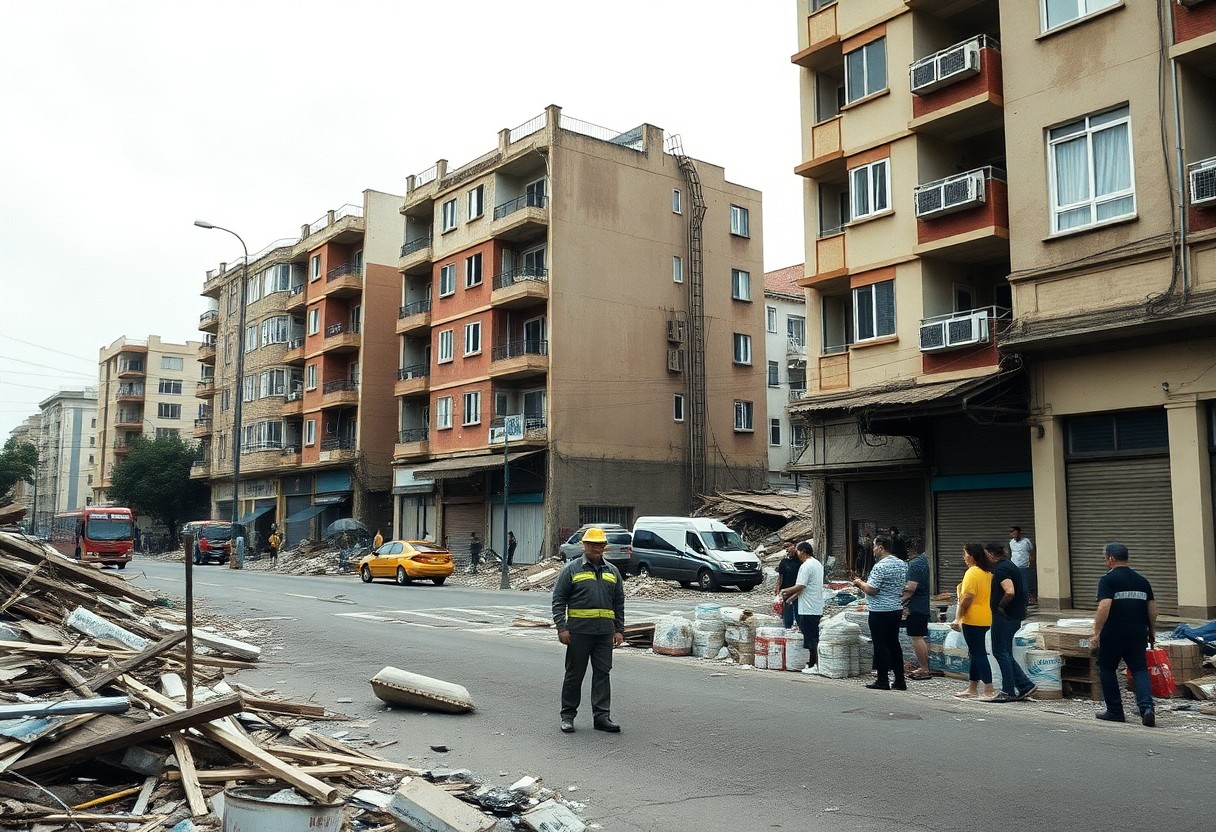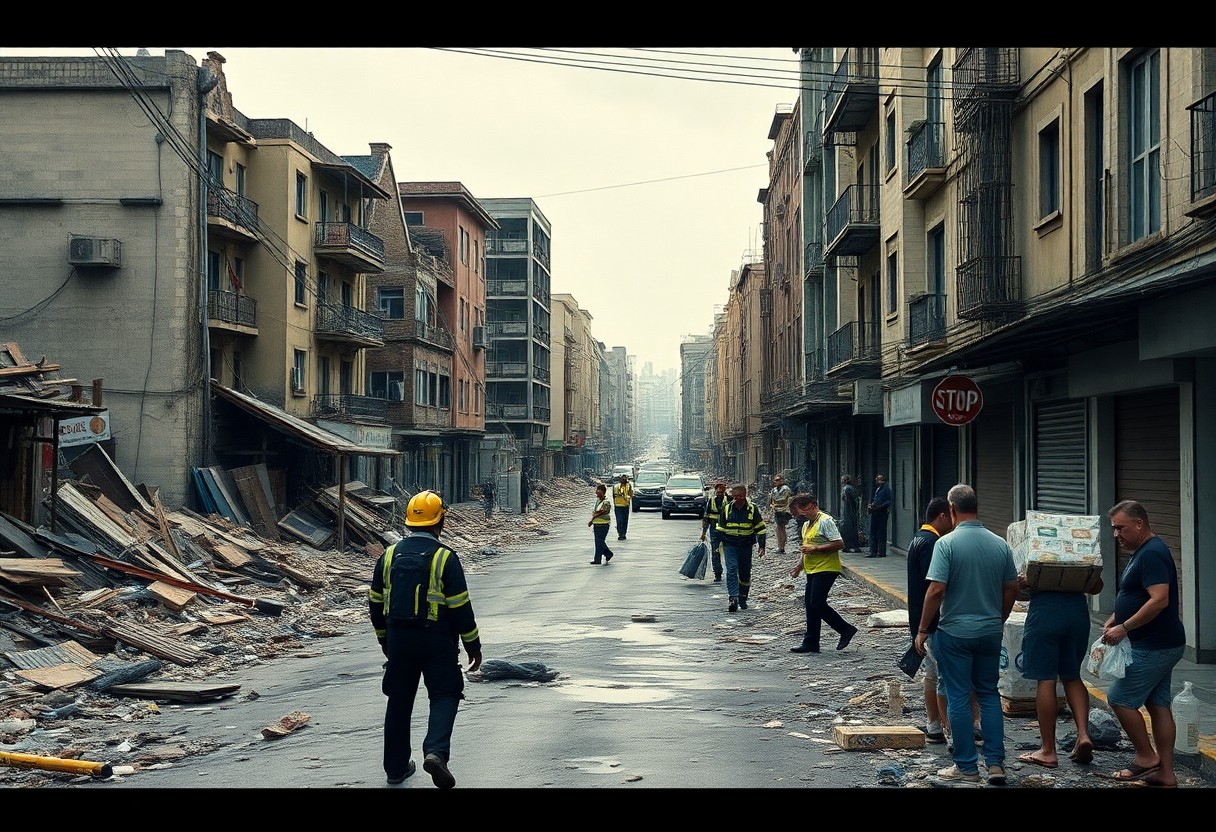Hurricane Milton has left many communities grappling with its impact, and understanding how its aftermath affects recovery efforts is important for you as a resident or responder. In this guide, you’ll learn about the challenges faced, from resource allocation to infrastructure damage, and the steps you can take to aid in the healing process. By staying informed and proactive, you can play a significant role in helping your community rebuild and recover from the devastation left in the wake of this storm.
Key Takeaways:
- Infrastructure Damage: Extensive damage to roads and bridges complicates access to affected areas, slowing down recovery efforts.
- Resource Allocation: Local governments face challenges in mobilizing resources efficiently, often leading to delays in necessary services.
- Community Resilience: Strong community networks play a vital role in recovery, providing support and resources to those in need.
- Financial Aid: The availability of federal and state financial aid significantly impacts the speed and effectiveness of recovery initiatives.
- Housing Crisis: Displacement caused by the hurricane has led to a housing crisis, necessitating immediate attention and long-term solutions.
- Health Risks: Increased health risks, including mental health issues and disease outbreaks, arise as recovery progresses.
- Long-Term Planning: The aftermath highlights the need for improved long-term planning to better prepare for future disasters.
Understanding Hurricane Milton’s Aftermath
Overview of Hurricane Milton
Little did the affected communities know that Hurricane Milton would soon impact their lives profoundly. This powerful storm struck with fierce winds and torrential rains, resulting in widespread devastation across multiple regions. You can expect that the long-term recovery processes will be shaped by the depth of this disaster and its aftermath.
Immediate Effects on Communities
The immediate aftermath of Hurricane Milton left communities grappling with unprecedented challenges. You may find neighborhoods altered beyond recognition, with homes destroyed and necessary services disrupted as residents faced the reality of rebuilding their lives.
Milton’s ferocity led to floods that turned streets into rivers, isolating families and inhibiting access to basic needs like food, water, and medical care. People within your community likely experienced significant emotional and physical stress, as they faced the aftermath of the hurricane and the urgency of recovery. Environmental impacts also left lasting scars, complicating the road to normalization.
Assessing Infrastructure Damage
Hurricane Milton’s impact on infrastructure was extensive, posing additional challenges to recovery. You will see critical utilities, transportation systems, and public spaces requiring urgent assessment and repair to restore stability and safety in the affected regions.
Infrastructure assessments are necessary for identifying the scope of the damage and prioritizing repairs. Understanding these effects helps you grasp the scale of recovery efforts needed, including the restoration of bridges, roads, and public facilities. The timeline for reconstruction may vary, but your community’s resilience will ultimately guide the rebuilding process. It’s a collective journey toward healing and renewal.

Factors Influencing Recovery Efforts
Assuming you are in a community affected by Hurricane Milton, understanding the various factors influencing recovery efforts is imperative. These factors can significantly impact the speed and efficiency of the recovery process:
- Government response and aid availability
- Community resilience and preparedness
- The economic impact on local businesses
- Environmental considerations
After evaluating these elements, it becomes clear that a multifaceted approach is necessary for effective recovery.
Government Aid and Resources
For communities affected by Hurricane Milton, government aid and resources play a vital role in recovery efforts. Various agencies are responsible for providing financial assistance, infrastructure repairs, and emergency services. The speed at which these resources are mobilized can dictate the trajectory of recovery in your area, facilitating not only immediate response but also long-term rebuilding initiatives.
Community Resilience and Preparedness
Now, you should consider how community resilience and preparedness can influence recovery. A community well-prepared for disasters can bounce back quicker because its infrastructure, resource allocation, and local networks are designed to tackle challenges head-on.
Another factor is the strength of community ties. When individuals and organizations work together before and after disasters, they create a support system that enhances the overall effectiveness of recovery efforts. Volunteers often emerge from familiar surroundings, while pre-established communication channels ensure everyone stays informed and supported during the rebuilding process.
Economic Impact on Local Businesses
With Hurricane Milton’s aftermath, the economic impact on local businesses can be severe. Your community’s economic vitality often hinges on the health of local businesses, some of which may struggle to recover from property damage and loss of revenue.
Efforts to revitalize local economies are critical for a robust recovery. Supporting small businesses can help safeguard jobs and restore the financial stability of your community. Authorities often encourage shop-local initiatives, and residents can opt to frequent impacted businesses to aid in their recovery journey.
Environmental Considerations
With the destructive forces of Hurricane Milton, environmental considerations cannot be overlooked. The environmental impact may include degraded ecosystems, pollution, and the loss of natural habitats, all of which can prolong recovery efforts in your area.
This necessitates a careful balance between reconstruction and environmental restoration. Communities must take into account the ecological implications of recovery decisions, seeking solutions that repair both buildings and nature to ensure a sustainable future. Engaging environmental experts during the recovery phase can help mitigate damage and promote resilience against future storms.

How to Navigate Insurance Claims
Despite the chaos following a hurricane, navigating your insurance claims can lead to the recovery process. Understanding your coverage is the first step to ensure you’re adequately compensated for damages.
Understanding Your Policy
For many homeowners, the specifics of an insurance policy can be overwhelming. Be sure to review your policy thoroughly, focusing on terms related to storm damage, deductibles, and coverage limits.
Documenting Damage Effectively
Now, let’s discuss how to properly document the damage to your property, as this will be integral to your claim’s success.
A methodical approach to documenting damage can significantly impact the approval of your claim. Start by taking clear photographic evidence of each affected area, both inside and outside your home. List damaged items with estimates for repair or replacement costs, and keep receipts for any emergency repairs you make to prevent further damage. This thorough documentation will support your case when communicating with your insurance adjuster.
Filing Claims: Step-by-Step Guide
Policyholders often benefit from understanding the claims process, which can streamline communication with your insurance provider.
| 1. Review Your Policy | Understand your coverage and deductibles. |
| 2. Document Damage | Take photos and make a list of all losses. |
| 3. Notify Your Insurer | Contact your insurance company as soon as possible. |
| 4. Submit Claim | Provide necessary documents and evidence. |
| 5. Follow Up | Stay in touch with your adjuster for updates. |
StepbyStep guidance through the claims process can ease your stress. Be proactive about following up with your insurer to ensure your claim progresses smoothly. Regular communication will also help resolve any issues that arise throughout the process.
Dealing with Claim Denials
The reality of insurance claims is that some may be denied, which can feel disheartening after enduring a disaster like a hurricane.
It is crucial to stay persistent if your claim is denied. Review the denial letter thoroughly to understand the reasons provided, and gather any additional evidence or documentation that refutes those claims. Reach out to your insurance company for clarification and explore the option of appealing the decision, as having support from a public adjuster or an attorney specializing in insurance claims can often strengthen your case.
Tips for Engaging with Local Authorities
Your engagement with local authorities plays a pivotal role in the recovery efforts following Hurricane Milton. Establishing clear communication channels can greatly enhance collaboration and resource allocation, ensuring that your needs and concerns are addressed efficiently. Here are some crucial tips to consider:
- Be proactive in reaching out to local agencies.
- Stay informed about local government initiatives and meetings.
- Document your communications and feedback.
- Utilize social media to connect with local authorities.
- Participate in local recovery programs or initiatives.
Any efforts to engage effectively will contribute to a smoother recovery process and foster community spirit.
Identifying Key Contacts
Clearly defining who the key contacts are in your local government is crucial. This includes officials responsible for emergency management, public safety, and community services. Building relationships with these individuals can facilitate quicker responses and tailored assistance to meet your recovery needs.
Effective Communication Strategies
Assuming that effective communication is simply about sending messages can lead to misunderstandings. It is vital to adapt your approach based on the context and the audience. Develop a plan for how you intend to share information, request resources, and follow up on issues that arise during the recovery process.
It’s beneficial to utilize multiple channels for communication, including email, phone calls, and in-person meetings. Be clear and concise in your messaging, making it easy for local authorities to understand your needs. Additionally, actively listening to their responses will build rapport and lead to more productive conversations.
Attending Community Meetings
Tips on attending community meetings can provide you with valuable insights and opportunities to voice your concerns. These meetings often cover recovery updates and resource distributions while allowing for public input. Engaging directly with decision-makers can ensure that your voice is heard.
To make the most out of community meetings, come prepared with questions and topics you want to discuss. Take detailed notes during the meeting, and don’t hesitate to introduce yourself to local officials. Establishing a personal connection can be beneficial for future interactions and can help keep your recovery needs at the forefront of local authorities’ minds.
For more insights, you can check this announcement on how California deploys Urban Search and Rescue Task Force teams in response to Hurricane Milton.
How to Organize Community Recovery Efforts
Many communities face significant challenges in the aftermath of disasters like Hurricane Milton. Your community can play a vital role in recovery efforts by coming together to organize initiatives that help those in need. For further context, you can find more about how Florida braced for brutal impact from Hurricane Milton. Collaboration and clear strategies will be key in mitigating the disaster’s lingering effects on your neighborhood.
Mobilizing Volunteers
While organizing recovery efforts, you can mobilize volunteers who are eager to support their neighbors. Reach out through social media, local organizations, and word-of-mouth to attract individuals willing to lend a hand. Engaging with local schools, clubs, and churches can further amplify your outreach, ensuring that everyone has the opportunity to contribute.
Creating a Recovery Action Plan
While you gather support, it’s vital to create a structured Recovery Action Plan that outlines the specific steps your community needs to take. This plan could include identifying immediate needs, allocating resources, and setting timelines for recovery efforts.
Efforts should focus on assessing the infrastructure, health services, and overall community welfare. Prioritizing which areas require the most attention will help you allocate volunteers and resources where they are needed most, facilitating efficient recovery and restoration.
Fundraising for Recovery Initiatives
Mobilizing support for fundraising initiatives can significantly enhance your recovery efforts. Organize community events or online campaigns to gather donations that will directly aid those affected by Hurricane Milton. Be sure to clearly communicate the mission of your fundraising efforts to encourage participation.
To maximize your fundraising potential, consider partnering with local businesses and leveraging social media platforms. Develop compelling narratives around the challenges faced by your community and the difference donations will make. This personal touch can motivate individuals and organizations to invest in your recovery initiatives and help rebuild your community.
How to Access Relief Resources
Not every recovery effort is the same, especially in the wake of Hurricane Milton. It’s vital to know where to find reliable relief resources to aid your recovery. For more information on how Florida braced for brutal impact from Hurricane Milton, you can check out this video.
Federal Assistance Programs
Programs under the Federal Emergency Management Agency (FEMA) can provide financial aid and support for individuals and businesses affected by Hurricane Milton. You can apply for assistance online or by visiting local FEMA offices for guidance on what help is available to you.
Non-Profit and Community Resources
Community organizations play a vital role in recovery. These local non-profits offer food, shelter, and vital supplies to those in need following the hurricane’s devastation.
It is important to reach out to non-profits in your area, as they often have resources tailored to specific community needs. Many local organizations are mobilizing to support your recovery through programs that include counseling, financial aid, and volunteer support to help you rebuild your life after the storm.
Local Fundraising and Donation Drives
Assistance through grassroots efforts can make a significant difference during your recovery journey. Local fundraising and donation drives work to collect resources that are directly delivered to those affected.
Resources from these drives may include food, clothing, and household vitals, which are vital in the immediate aftermath of a disaster. Check with local community centers, social media groups, and local news outlets to find out how you can participate or benefit from these efforts.

Long-term Recovery Strategies
Once again, the resilience of communities impacted by Hurricane Milton highlights the need for strategic planning in long-term recovery. Recovery efforts must evolve beyond immediate relief to ensure that not only are the needs of the present met but also that future vulnerabilities are addressed effectively.
Building Back Better: Infrastructure Improvements
Little can be accomplished without a solid foundation. By prioritizing infrastructure improvements, you can ensure that roads, bridges, and utilities are not only repaired but enhanced to withstand future storms, leading to a more resilient community.
Sustaining Economic Recovery
Little progress can be made without addressing the economy. This involves fostering support for local businesses and creating jobs that can bolster economic stability, ensuring that communities have the resources necessary to weather future challenges.
With strategic investments in workforce development and local entrepreneurship, your community can stimulate economic growth. Programs that provide training and education can empower residents, allowing them to participate in the recovery process. Additionally, local businesses must receive support to rebuild, which can lead to a stronger economy and enhanced community ties.
Ensuring Environmental Sustainability
Any recovery effort should consider environmental impacts. Adopting sustainable practices can help you protect your natural resources while also mitigating future disaster risks. Integration of green technologies and restoration of ecosystems play vital roles in this effort.
Infrastructure improvements can include the use of green materials and building features that promote energy efficiency. By restoring wetlands and other natural buffers, your community can mitigate flooding and enhance resilience against future storms. Collaborative planning strategies will further ensure that sustainability is at the core of any rebuilding efforts, paving the way for a thriving, environmentally-friendly community.
Conclusion
Considering all points, you must recognize that Hurricane Milton’s aftermath poses significant challenges to recovery efforts. The extensive damage to infrastructure and homes directly impacts your community’s ability to rebuild effectively. You may face a slower recovery due to the need for extensive assessments, resource allocation, and coordinated responses among various agencies. Understanding these complexities allows you to stay informed and engaged in the recovery process, reinforce support systems, and foster resilience in the face of future disasters.
FAQ
Q: How has Hurricane Milton impacted infrastructure in affected areas?
A: The aftermath of Hurricane Milton has resulted in significant structural damage to roads, bridges, and public buildings. Many vital services have been disrupted, leading to a longer recovery process. Emergency crews are focused on assessing damage and clearing debris to restore access and functionality in the impacted regions.
Q: What challenges do recovery teams face in the wake of Hurricane Milton?
A: Recovery teams are dealing with several challenges including limited access to affected areas due to damaged transportation routes, the need for safety assessments in unstable regions, and high demand for resources such as food, water, and medical supplies. Coordinating a large-scale response in such conditions requires meticulous planning and collaboration among multiple agencies.
Q: How are local governments facilitating recovery efforts post-Hurricane Milton?
A: Local governments are implementing emergency response plans which include establishing temporary shelters for displaced residents, coordinating debris removal efforts, and providing aid distribution points. They are also working closely with state and federal agencies to expedite recovery funding and resources.
Q: What role do nonprofit organizations play in recovery efforts after Hurricane Milton?
A: Nonprofit organizations play a vital role by providing immediate assistance, such as food and shelter, and long-term support, including rebuilding efforts and emotional counseling. They often mobilize volunteers and resources swiftly to help communities get back on their feet.
Q: What can individuals do to assist in recovery efforts following Hurricane Milton?
A: Individuals can contribute by volunteering their time, donating money or supplies to local charities, and spreading awareness of ongoing needs in their communities. Participating in community clean-up efforts and attending local fundraisers can also significantly support recovery initiatives.
Q: How has Hurricane Milton affected the local economy?
A: The local economy has faced setbacks due to damage to businesses and loss of income for many workers. The focus on recovery can initially shift resources away from economic development, but there is potential for revitalization through rebuilding efforts and the influx of recovery funds, which can help stimulate growth in the long run.
Q: What is the expected timeline for recovery efforts after Hurricane Milton?
A: The timeline for recovery can vary widely depending on the extent of the damage, availability of resources, weather conditions, and community resilience. Initial response efforts may take weeks, while full recovery of homes, infrastructure, and economy may take months or even years. Continuous assessments are needed to gauge progress and adjust plans as necessary.